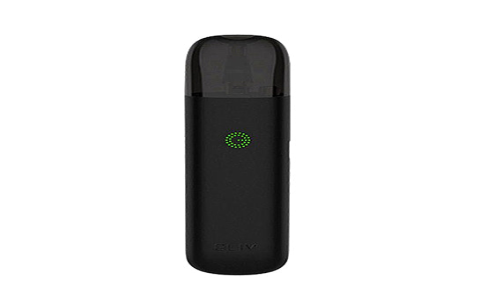Micro Air Pressure Sensors in Electronic Cigarettes
Micro air pressure sensors are integral components in modern electronic cigarettes, primarily responsible for detecting a user’s inhalation, or “puff.” This detection mechanism automatically activates the device, initiating the heating element to vaporize e-liquid without the need for a manual button.
Core Functionality and Working Principle
Detection Mechanism: These sensors operate by detecting minute changes in air pressure within the e-cigarette’s airflow channel when a user draws on the mouthpiece. Typically, this involves a Micro-Electro-Mechanical System (MEMS) diaphragm or a similar sensitive structure that deforms or deflects in response to the pressure differential created by inhalation.

Signal Conversion and Processing: The physical deflection or pressure change is converted into an analog or digital electrical signal. This signal is then transmitted to the e-cigarette’s microcontroller unit (MCU). The MCU processes this signal, comparing it against pre-set thresholds to determine if a valid puff event has occurred.
Activation Trigger: If the processed signal meets the criteria for a puff (e.g., specific pressure drop magnitude and duration), the MCU triggers the power supply (battery) to energize the atomizer coil, heating the e-liquid and producing vapor.
Key Features and Selection Criteria
- Sensitivity and Accuracy: The sensor must be highly sensitive to detect subtle puffs yet accurate enough to avoid false activations from minor air disturbances or handling. Precise thresholds are crucial for reliable operation.
- Response Time: A rapid response time (typically in milliseconds) is essential for an immediate vaping experience, ensuring vapor production begins almost instantaneously with the user’s draw.
- Miniaturization: Given the compact design of e-cigarettes, sensors must be extremely small and lightweight for seamless integration onto the printed circuit board (PCB) and within the device housing.
- Low Power Consumption: To maximize battery life, the sensor and its associated circuitry must consume minimal power, especially in standby mode.
- Durability and Reliability: The sensor needs to withstand the operational environment, including potential (though ideally prevented) exposure to e-liquid constituents, temperature variations, and mechanical stress over many puff cycles.
- Pressure Range: Must operate effectively within the negative pressure range typically generated by human inhalation for vaping, which is generally low.
- Cost-Effectiveness: As e-cigarettes are mass-produced consumer devices, the cost of the sensor is a significant factor.
- Immunity to Interference: Good immunity to electromagnetic interference (EMI) and environmental factors like temperature and humidity changes is important for consistent performance.
Advantages in E-Cigarette Applications
Automatic Activation: The primary advantage is enabling “auto-draw” functionality, which mimics the experience of smoking a traditional cigarette more closely than button-activated devices. This offers convenience and ease of use.
Enhanced User Experience: The seamless activation provides a more intuitive and natural interaction with the device.
Device Form Factor: The elimination of a physical button can allow for sleeker, more minimalist, and often smaller e-cigarette designs.
Potential Safety Feature: When properly implemented with control logic, it can help prevent accidental firing (e.g., in a pocket or bag) as activation is tied to a specific airflow signature, although this also depends heavily on the firmware’s sophistication.
Common Sensor Technologies
MEMS Piezoresistive Sensors: These are widely adopted due to their small footprint, high sensitivity, good linearity, and suitability for high-volume manufacturing. Pressure changes induce stress in a silicon diaphragm, which alters the resistance of embedded piezoresistors, generating a measurable electrical signal.
MEMS Capacitive Sensors: In these sensors, air pressure changes cause a diaphragm to move, altering the capacitance between it and a fixed plate. Capacitive sensors can also offer high sensitivity and low power consumption.

Challenges and Design Considerations
E-liquid and Condensate Protection: Sensors are sensitive to liquid ingress. Effective sealing of the sensor housing or strategic placement within the device’s airflow path, away from direct e-liquid contact and condensate build-up, is critical for longevity and reliability.
Airflow Path Design: The design of the airflow channel leading to and around the sensor is crucial. Obstructions or blockages by condensate or debris can significantly impact sensor performance and sensitivity.
Calibration and Stability: Sensors may require factory calibration. Their characteristics can also drift over time due to aging, temperature fluctuations, or stress, potentially affecting activation thresholds and requiring robust compensation algorithms in the device firmware.
Distinguishing Puff Signatures: The e-cigarette’s firmware must incorporate intelligent algorithms to analyze the sensor’s output and reliably differentiate between a genuine user puff and other pressure events, such as blowing into the device, dropping it, or changes in ambient pressure.









